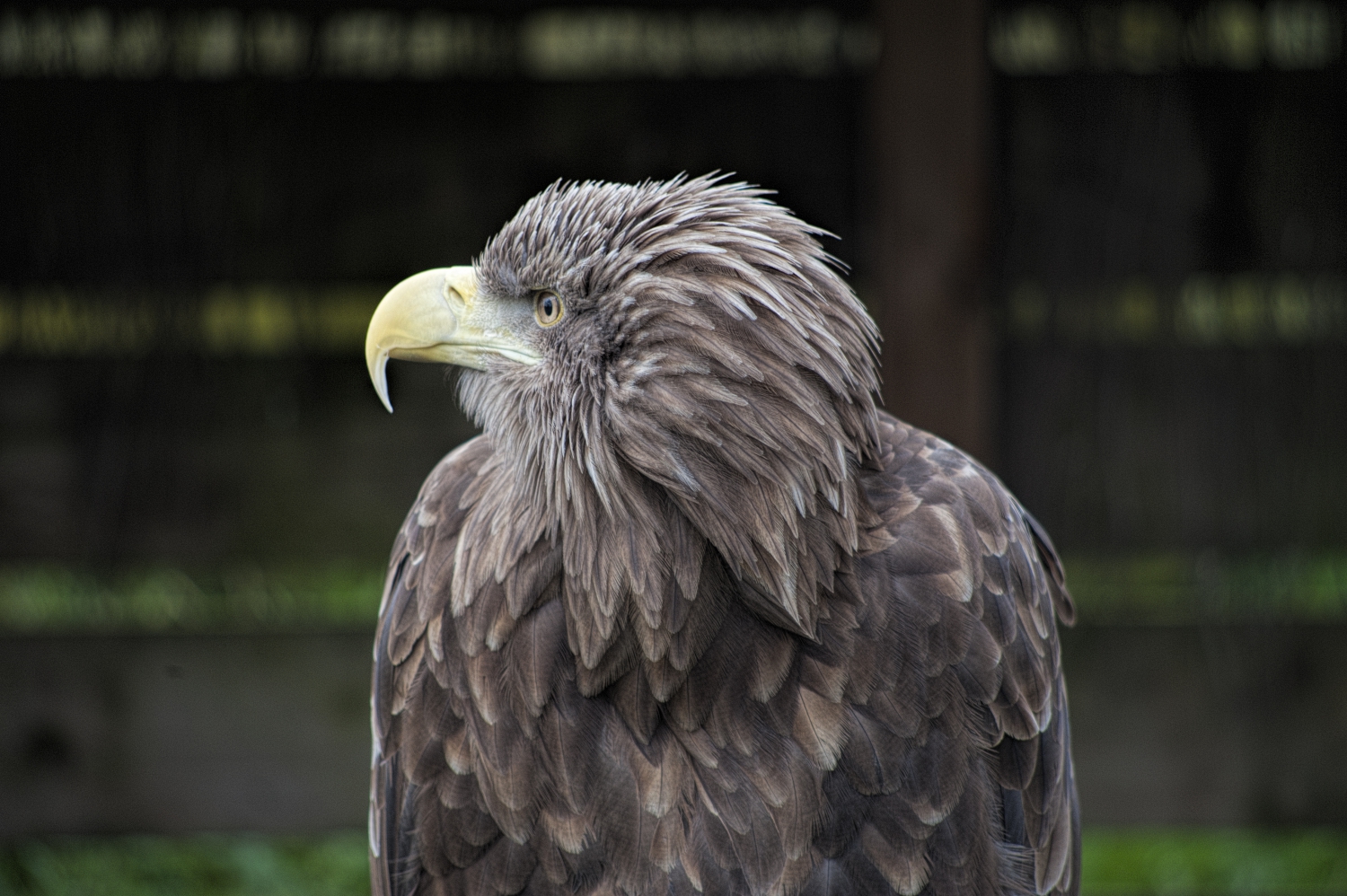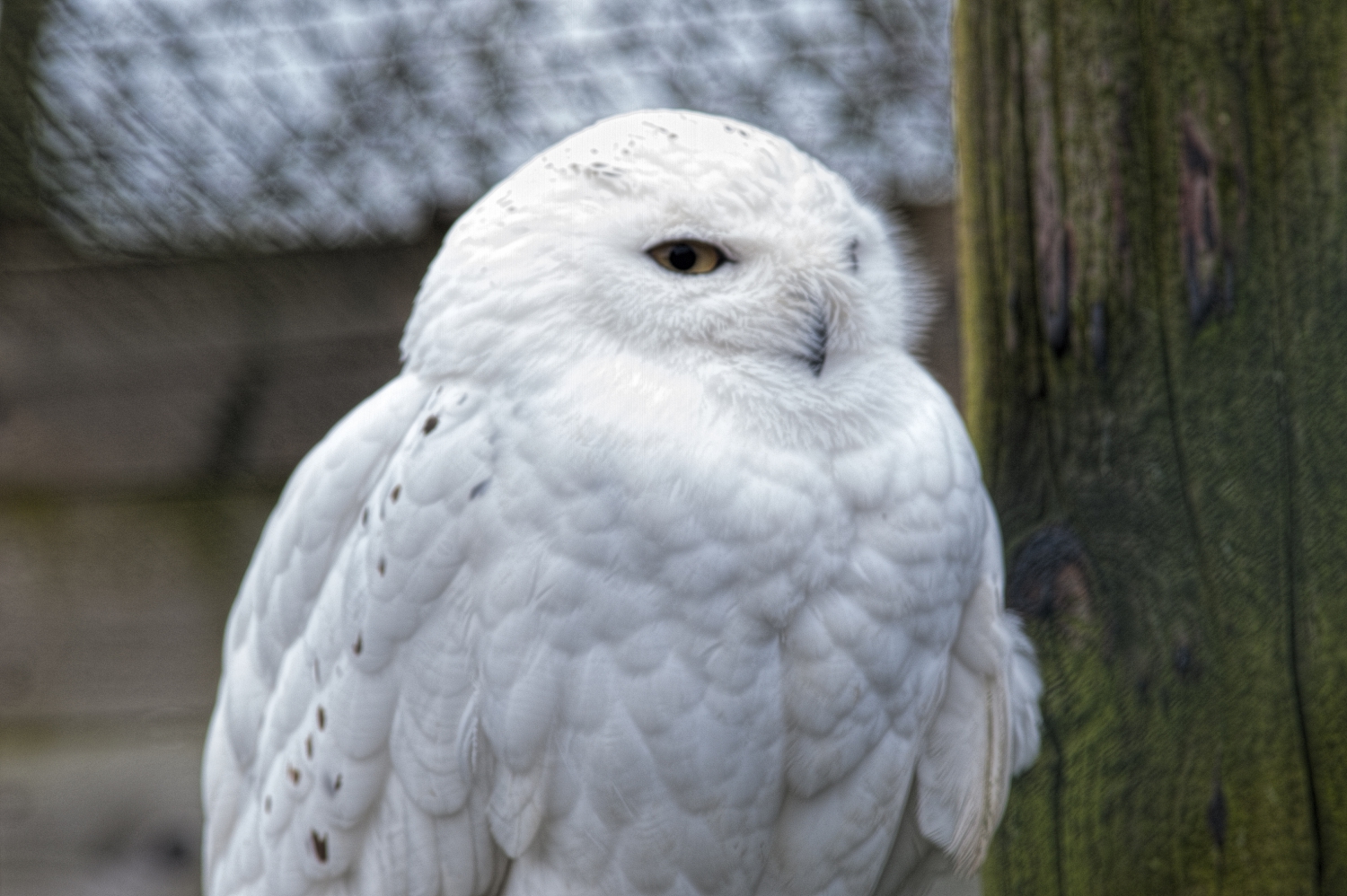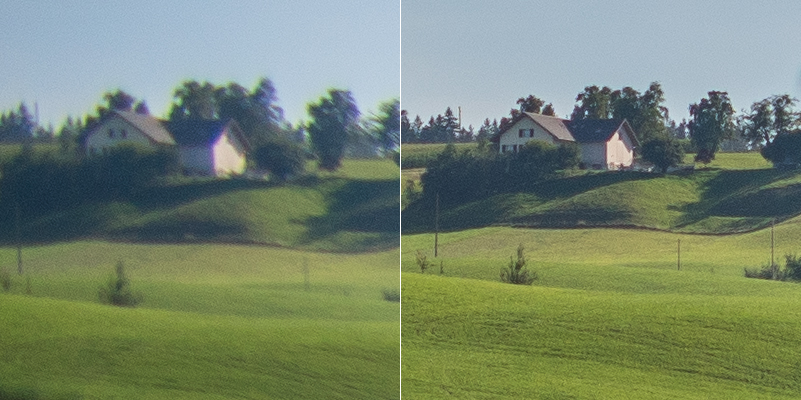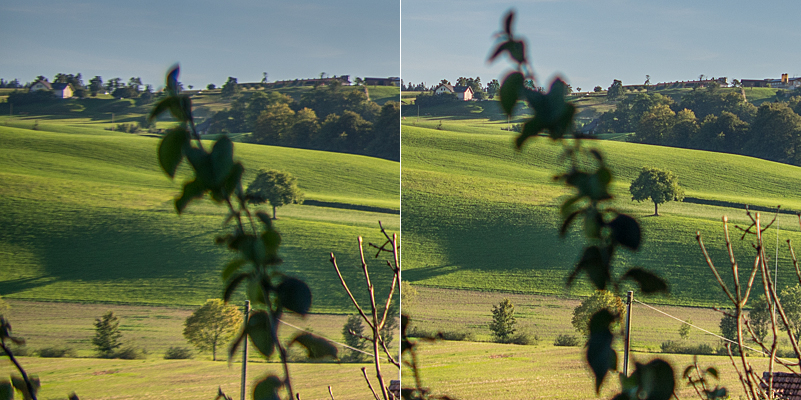| View previous topic :: View next topic |
| Author |
Message |
MarkS

Joined: 23 Apr 2016
Posts: 99
|
 Posted: Mon Feb 06, 2017 7:09 pm Post subject: Tamron 22A 35-135mm f3.5-4.2 first outing Posted: Mon Feb 06, 2017 7:09 pm Post subject: Tamron 22A 35-135mm f3.5-4.2 first outing |
 |
|
MarkS wrote:
Got this lens just recently and took it for an outing yesterday - the adaptall fitting wasnt registering correctly on the camera body - so that one will get replaced. BUT the lens was superb with great definition in the pictures
A White Tailed Sea Eagle


A Snowy Owl
 |
|
| Back to top |
|
 |
Lloydy


Joined: 02 Sep 2009
Posts: 7795
Location: Ironbridge. UK.
Expire: 2022-01-01
|
 Posted: Mon Feb 06, 2017 9:27 pm Post subject: Posted: Mon Feb 06, 2017 9:27 pm Post subject: |
 |
|
Lloydy wrote:
I've had my copy about 6 months, and I'm using it more and more - it's such a good lens on my Sony A6000. I like Tamron's, and this is probably my favourite zoom.
_________________
LENSES & CAMERAS FOR SALE.....
I have loads of stuff that I have to get rid of, if you see me commenting about something I have got and you want one, ask me.
My Flickr https://www.flickr.com/photos/mudplugga/
My ipernity -
http://www.ipernity.com/home/294337 |
|
| Back to top |
|
 |
kryss


Joined: 13 Sep 2009
Posts: 2169
Location: Canada
Expire: 2017-09-18
|
 Posted: Mon Feb 06, 2017 10:33 pm Post subject: Posted: Mon Feb 06, 2017 10:33 pm Post subject: |
 |
|
kryss wrote:
Marks..... Fabulous shots and I agree, great lens.  
_________________
Do not trust Atoms....they make up everything. |
|
| Back to top |
|
 |
marcusBMG

Joined: 07 Dec 2012
Posts: 1318
Location: Conwy N Wales
|
 Posted: Mon Feb 06, 2017 11:25 pm Post subject: Posted: Mon Feb 06, 2017 11:25 pm Post subject: |
 |
|
marcusBMG wrote:
Those eagle shots have come out great... This is my review on Pentax forums, and like you I found this lens to be a fine performer, specifically at the longer focal lengths. Notably warm rendering is a USP. I need to update that review actually - better test pics and I now have a 40A, the later 35-135mm to compare.
This is the seagull 1:1 pixel peep crop. Pentax Kr, jpg OoC.

I wasn't impressed with its close focus performance, and I found it a bit susceptible to flare.
_________________
pentax ME super (retired)
Pentax K3-ii; pentax K-S2; Samsung NX 20; Lumix G1 + adapters;
Adaptall collection (proliferating!) inc 200-500mm 31A, 300mm f2.8, 400mm f4.
Primes: takumar 55mm; smc 28mm, 50mm; kino/komine 28mm f2's, helios 58mm, Tamron Nestar 400mm, novoflex 400mm, Vivitar 135mm close focus, 105mm macro; Jupiter 11A; CZJ 135mm.
A classic zoom or two: VS1 (komine), Kiron Zoomlock... |
|
| Back to top |
|
 |
Oldhand


Joined: 01 Apr 2013
Posts: 6005
Location: Mid North Coast NSW - Australia
|
 Posted: Tue Feb 07, 2017 1:20 am Post subject: Posted: Tue Feb 07, 2017 1:20 am Post subject: |
 |
|
Oldhand wrote:
Congratulations on those eagle images - very well done.
I once had this lens and it was like the little girl who had the little curl right in the middle of her forehead.
When it was good it was very very good, but it it was bad it was horrid.
Mine also had a tendency towards central flare that I could never predict or control.
Sometimes it took wonderful shots and then the very next image would show blown out flare in the middle of the frame.
I tried everything that I knew before admitting that the problem for me was unsolvable.
I sold it and the buyer was happy, so it might have been my lens camera combination.
Yours looks to be very good.
I would very much like to see some more images from it when you take it out again.
Cheers
T |
|
| Back to top |
|
 |
Lloydy


Joined: 02 Sep 2009
Posts: 7795
Location: Ironbridge. UK.
Expire: 2022-01-01
|
 Posted: Tue Feb 07, 2017 1:34 am Post subject: Posted: Tue Feb 07, 2017 1:34 am Post subject: |
 |
|
Lloydy wrote:
A couple of pics on Flickr, I'll download them tomorrow.
https://flic.kr/p/NBFr7S
https://flic.kr/p/NBFngA
_________________
LENSES & CAMERAS FOR SALE.....
I have loads of stuff that I have to get rid of, if you see me commenting about something I have got and you want one, ask me.
My Flickr https://www.flickr.com/photos/mudplugga/
My ipernity -
http://www.ipernity.com/home/294337 |
|
| Back to top |
|
 |
stevemark

Joined: 29 Apr 2011
Posts: 4063
Location: Switzerland
|
 Posted: Sun Sep 03, 2023 1:45 pm Post subject: Posted: Sun Sep 03, 2023 1:45 pm Post subject: |
 |
|
stevemark wrote:
While I have a few Tamron zooms and primes, they usually are hidden somewhere in the attic. Yesterday I decided to play a bit with some of those lenses - including the 22A 3.5-4.3/35-135mm lens. While I have not tested it for flares, ghosting and distortion, I am pretty impressed with its detail resolution on 24 MP FF.
Wide open there's a certain softness, especially in the outer parts of the image, but from f5.6 on the entire image looks clear and crisp, even in the corners (most 35-105 vintage zooms do worse). At the extremes there are some lateral CAs (f=35mm and f=135mm), but they are as well controlled as with a good prime. In the 50-100mm range there are virtually no lateral CAs, and the entire image looks really good.
S
_________________
www.artaphot.ch |
|
| Back to top |
|
 |
kiddo

Joined: 29 Jun 2018
Posts: 1272
|
 Posted: Sun Sep 03, 2023 2:29 pm Post subject: Posted: Sun Sep 03, 2023 2:29 pm Post subject: |
 |
|
kiddo wrote:
How would you guys rate the 40A version same FL of Tamron?
In fact, this focal length has so many models filter 58mm, 67mm, CF macro 67mm etc., Is there any winner between all of them? |
|
| Back to top |
|
 |
caspert79


Joined: 31 Oct 2010
Posts: 3217
Location: The Netherlands
|
 Posted: Sun Sep 03, 2023 3:11 pm Post subject: Posted: Sun Sep 03, 2023 3:11 pm Post subject: |
 |
|
caspert79 wrote:
Very handy focal range also.
_________________
For Sale:
Steinheil Auto D Tele Quinar 135mm f/2.8 (Exa)
ISCO Isconar 100mm f/4 (Exa)
Steinheil Cassarit 50mm f/2.8 M39 (Paxette)
I'm always interested in trading lenses! |
|
| Back to top |
|
 |
stevemark

Joined: 29 Apr 2011
Posts: 4063
Location: Switzerland
|
 Posted: Sun Sep 03, 2023 4:26 pm Post subject: Posted: Sun Sep 03, 2023 4:26 pm Post subject: |
 |
|
stevemark wrote:
| kiddo wrote: |
How would you guys rate the 40A version same FL of Tamron?
In fact, this focal length has so many models filter 58mm, 67mm, CF macro 67mm etc., Is there any winner between all of them? |
I only own the earlier (and bigger) 22A 3.5-4.5/35-135mm. At first I thought the Minolta MD-III 3.5-4.5/35-135mm might share the same optical construction with the Tamron 40A (due to the similar size and look), but that isn't true. The Tamron is lightly better at f=35mm (mainly less CAs in the extreme corners); the Minolta has an edge at f=135mm (less lateral CAs). Both lenses have a comparable detail resolution over the entire focal range.
Maybe someone else can write about differences and similarities between the 22A and 40A versions of the Tamron 35-135mm lenses?
S
EDIT: Interestingly, the Tamron 28A 4-4.5/28-135mm, although being a SP lens, at all focal lengths is slightly inferior to the aforementioned 22A 35-135mm.
EDIT 2: The Tamron 26A 3.5-4.2/35-210mm lens, also an SP lens, also can't compete with the 22A 35-135mm lens. Not only ist it much bigger and heavier, but at comparable focal lengths and aperture settings, at least in the outer areas of the image it also has somehow less resolution. Tested with 24 MP Sony A7RII, as usual.
_________________
www.artaphot.ch |
|
| Back to top |
|
 |
D1N0


Joined: 07 Aug 2012
Posts: 2536
|
 Posted: Mon Sep 04, 2023 1:50 pm Post subject: Posted: Mon Sep 04, 2023 1:50 pm Post subject: |
 |
|
D1N0 wrote:
There are test results on adaptall-2.com for the 22a 40a and 26a (not for the 28a) I'd imagine copy variation to be a thing with these complez zooms.
22a

40a

26a

The 40a would be the best performer out of these three
_________________
pentaxian |
|
| Back to top |
|
 |
stevemark

Joined: 29 Apr 2011
Posts: 4063
Location: Switzerland
|
 Posted: Mon Sep 04, 2023 3:44 pm Post subject: Posted: Mon Sep 04, 2023 3:44 pm Post subject: |
 |
|
stevemark wrote:
| D1N0 wrote: |
There are test results on adaptall-2.com for the 22a 40a and 26a (not for the 28a) I'd imagine copy variation to be a thing with these complez zooms.
|
Those test results are of limited value.
Example: Tamron 3.5-4.2/35-210mm @ 35mm and f3.5. According to the test
Center: 49LP/mm resolution and 44% contrast at 30LP/MM
Center: 44LP/mm resolution and 40% contrast at 30LP/MM
100% crops from corner / center (43 MP FF) in reality look like that:

S
_________________
www.artaphot.ch |
|
| Back to top |
|
 |
D1N0


Joined: 07 Aug 2012
Posts: 2536
|
 Posted: Mon Sep 04, 2023 4:06 pm Post subject: Posted: Mon Sep 04, 2023 4:06 pm Post subject: |
 |
|
D1N0 wrote:
I doubt they were peeping so deep into the corners on film 
_________________
pentaxian |
|
| Back to top |
|
 |
stevemark

Joined: 29 Apr 2011
Posts: 4063
Location: Switzerland
|
 Posted: Mon Sep 04, 2023 4:24 pm Post subject: Posted: Mon Sep 04, 2023 4:24 pm Post subject: |
 |
|
stevemark wrote:
| D1N0 wrote: |
I doubt they were peeping so deep into the corners on film  |
This has nothing to do with "peeping so deep into the corners".
Same lens as above, again 35mm focal length and f3.5 aperture. This time 100% crops from the center and from the image border (i. e. about 17mm away from the center, while corner is about 21mm away from the center).

Those 40-50 year old tests simply weren't made for todays sensors.
S
_________________
www.artaphot.ch |
|
| Back to top |
|
 |
visualopsins


Joined: 05 Mar 2009
Posts: 11053
Location: California
Expire: 2025-04-11
|
 Posted: Mon Sep 04, 2023 6:13 pm Post subject: Posted: Mon Sep 04, 2023 6:13 pm Post subject: |
 |
|
visualopsins wrote:
But they didn't use film, they used optics bench...
_________________
☮☮☮☮☮☮☮☮☮☮☮☮☮☮☮☮☮☮☮☮☮☮☮☮☮☮☮☮☮☮☮☮ like attracts like! ☮☮☮☮☮☮☮☮☮☮☮☮☮☮☮☮☮☮☮☮☮☮☮☮☮☮☮☮☮☮☮☮
Cameras: Sony ILCE-7RM2, Spotmatics II, F, and ESII, Nikon P4
Lenses:
M42 Asahi Optical Co., Takumar 1:4 f=35mm, 1:2 f=58mm (Sonnar), 1:2.4 f=58mm (Heliar), 1:2.2 f=55mm (Gaussian), 1:2.8 f=105mm (Model I), 1:2.8/105 (Model II), 1:5.6/200, Tele-Takumar 1:5.6/200, 1:6.3/300, Macro-Takumar 1:4/50, Auto-Takumar 1:2.3 f=35, 1:1.8 f=55mm, 1:2.2 f=55mm, Super-TAKUMAR 1:3.5/28 (fat), 1:2/35 (Fat), 1:1.4/50 (8-element), Super-Multi-Coated Fisheye-TAKUMAR 1:4/17, Super-Multi-Coated TAKUMAR 1:4.5/20, 1:3.5/24, 1:3.5/28, 1:2/35, 1:3.5/35, 1:1.8/85, 1:1.9/85 1:2.8/105, 1:3.5/135, 1:2.5/135 (II), 1:4/150, 1:4/200, 1:4/300, 1:4.5/500, Super-Multi-Coated Macro-TAKUMAR 1:4/50, 1:4/100, Super-Multi-Coated Bellows-TAKUMAR 1:4/100, SMC TAKUMAR 1:1.4/50, 1:1.8/55
M42 Carl Zeiss Jena Flektogon 2.4/35
Contax Carl Zeiss Vario-Sonnar T* 28-70mm F3.5-4.5
Pentax K-mount SMC PENTAX-A ZOOM 1:3.5 35~105mm, SMC PENTAX ZOOM 1:4 45~125mm
Nikon Micro-NIKKOR-P-C Auto 1:3.5 f=55mm, NIKKOR-P Auto 105mm f/2.5 Pre-AI (Sonnar), Micro-NIKKOR 105mm 1:4 AI, NIKKOR AI-S 35-135mm f/3,5-4,5
Tamron SP 17mm f/3.5 (51B), Tamron SP 17mm f/3.5 (151B), SP 500mm f/8 (55BB), SP 70-210mm f/3.5 (19AH)
Vivitar 100mm 1:2.8 MC 1:1 Macro Telephoto (Kiron)
|
|
| Back to top |
|
 |
Doc Sharptail


Joined: 23 Nov 2020
Posts: 1211
Location: Winnipeg Canada
|
 Posted: Mon Sep 04, 2023 6:16 pm Post subject: Posted: Mon Sep 04, 2023 6:16 pm Post subject: |
 |
|
Doc Sharptail wrote:
| stevemark wrote: |
Those 40-50 year old tests simply weren't made for todays sensors.
S |
There's another possible variable at work that they didn't even dream of back in the film era- adapters to mount these old lenses for those sensors... those old lenses certainly were not designed for that use.
-D.S.
_________________
D-810, F2, FTN.
35mm f2 O.C. nikkor
50 f2 H nikkor, 50 f 1.4 AI-s, 135 f3.5 Q,
50 f2 K nikkor 2x, 28-85mm f3.5-4.5 A/I-s, 35-105 3.5-4.5 A/I-s, 200mm f4 Micro A/I, partial list.
"Ain't no half-way" -S.R.V.
"Oh Yeah... Alright" -Paul Simon |
|
| Back to top |
|
 |
eggplant


Joined: 27 May 2020
Posts: 517
|
 Posted: Mon Sep 04, 2023 8:42 pm Post subject: Posted: Mon Sep 04, 2023 8:42 pm Post subject: |
 |
|
eggplant wrote:
| stevemark wrote: |
| D1N0 wrote: |
I doubt they were peeping so deep into the corners on film  |
This has nothing to do with "peeping so deep into the corners".
Same lens as above, again 35mm focal length and f3.5 aperture. This time 100% crops from the center and from the image border (i. e. about 17mm away from the center, while corner is about 21mm away from the center).

Those 40-50 year old tests simply weren't made for todays sensors.
S |
Hmmmm. Granted, you tested against other lenses, so that experience amongst competitors is there to call on. And it could just suck at high res. I'd say there could be about 10-20% better performance with a better copy, but this experience is still representative. Mainly because of all your experiences with competitor lenses.
And to be fair to old lenses, even the ones you've ranked as good in the past don't look so happy against this target! That's me coming to terms with modern sensors. I should look at more old film negatives, really... not that the lenses were bottle glass - you can't hide an MTF chart.
_________________
UK |
|
| Back to top |
|
 |
stevemark

Joined: 29 Apr 2011
Posts: 4063
Location: Switzerland
|
 Posted: Mon Sep 04, 2023 9:36 pm Post subject: Posted: Mon Sep 04, 2023 9:36 pm Post subject: |
 |
|
stevemark wrote:
| visualopsins wrote: |
| But they didn't use film, they used optics bench... |
An "optical bench" is simply a platform used to keep things stable (no vibration) and perfectly aligned. It is by no means is an MTF measuring device. MTF measuring devices back then were extremely expensive and scarce. Not even all lens-producing companies had them.
I know that the extremely well made tests by Walter E. Schön (for German magazines, around 1980) were made on film (https://www.weschoen.de/vita.html). Walter E. Schön (a mathemathician and physicist) frankly admits that his tests did stir up the community since they were truthful and did not downplay the shortcomings of lenses tested. "On several occasions, the companies concerned threatened me with legal action and claims for damages following negative test results, but always retracted them meekly as soon as I presented my test photos and test protocols" he adds.
| Doc Sharptail wrote: |
| stevemark wrote: |
Those 40-50 year old tests simply weren't made for todays sensors.
S |
There's another possible variable at work that they didn't even dream of back in the film era- adapters to mount these old lenses for those sensors... those old lenses certainly were not designed for that use.
-D.S. |
Absolutely. When testing vintage primes I'm quite confident in the results, especially when taken with "low res" 24 MP cameras. Quite often I have tested two or three lenses of the same type (and occasionally up to ten). Results nearly always are very constistant.
Vintage zooms are a bit different. Two sets of Minolta zooms (seven samples of the extremely complicated AF 28-135 and ten samples of the different versions of the MD 35-70) were indistiguishable on 24 MP FF. Other samples - e. g. from Konica (3.5/80-200) or Tokina (3.5-4.3/35-105) had visible sample variation. Sinmilar problems were found when testing ten Mamiya E 3.5/135mm (an ultra-cheap tele lens from 1980). Quality control matters ...
Now the Tamron zooms, due to their Adaptall-2 system, are (in theory at least) even more prone to problems when testing. There's the zoom mechanism, then there's the Adaptall-2 adapter, then there's the additional "normal" adapter, and there's the camera (we remember the crazy flexbody of the Sony Aplha 7 ...). Lot's of possible deviations and errors, for sure.
What worries me most when testing zoom lenses is a possible deviation from the ideal "lens to sensor" distance, e. g. by mis-calibrated lenses (wear & tear!) or by shorther-than-needed adapters. On some occasions I was able to check the influence of the variation of the distance between zoom lens and sensor. The Tamron SP 28-135mm, for example, has a simple "macro mechanism" which changes the distance between the entire optical system and the sensor (same as in a ordinary prime lens). Using it I was able simulate a "bad adapter" and check the influence of a wrong distance between lens and sensor. Surprisingly, there was just a slight change in corner performance when increasing the distance "lens to sensor" for up to 1 mm! Center performance was still the same (at least on 24 MP FF; of course an MTF measurement would have shown a difference).
S
_________________
www.artaphot.ch |
|
| Back to top |
|
 |
Pancolart


Joined: 04 Feb 2008
Posts: 3705
Location: Slovenia, EU
Expire: 2013-11-18
|
 Posted: Tue Sep 05, 2023 7:29 pm Post subject: Posted: Tue Sep 05, 2023 7:29 pm Post subject: |
 |
|
Pancolart wrote:
Sample variation perhaps due more complicated build then primes. But even more critical issue, if tested today, after 40 years any zoom i pick from my collection there will surely be dust layers or haze. Evaporated grease is much more prone to reach glass elements which mostly are not sufficiently separated from multiple helicoids. And problems are not easy to spot, since 9+ elements.
_________________
---------------------------------
The Peculiar Apparatus Of Victorian Steampunk Photography: 100+ Genuine Steampunk Camera Designs https://www.amazon.com/dp/B0B92829NS |
|
| Back to top |
|
 |
stevemark

Joined: 29 Apr 2011
Posts: 4063
Location: Switzerland
|
 Posted: Tue Sep 05, 2023 7:52 pm Post subject: Posted: Tue Sep 05, 2023 7:52 pm Post subject: |
 |
|
stevemark wrote:
| Pancolart wrote: |
| Sample variation perhaps due more complicated build then primes. But even more critical issue, if tested today, after 40 years any zoom i pick from my collection there will surely be dust layers or haze. Evaporated grease is much more prone to reach glass elements which mostly are not sufficiently separated from multiple helicoids. And problems are not easy to spot, since 9+ elements. |
Sure. That will reduce the contrast (often to a visible amount). But it doesn't account for the dramatic loss of resolution observed (here shown: center vs border):

The test methods of Modern Photography around 1980 were based on Panatomic-X test images and (after 1980) measuring MTF values at 30 lp/mm which corresponds to about 3 MP on full frame cameras.
Re-sizing the original 43 MP image to 3 mp results in nearly equal image quality in the center and at the border (100% crops from a 3 MP FF image):

S
_________________
www.artaphot.ch |
|
| Back to top |
|
 |
|
|
